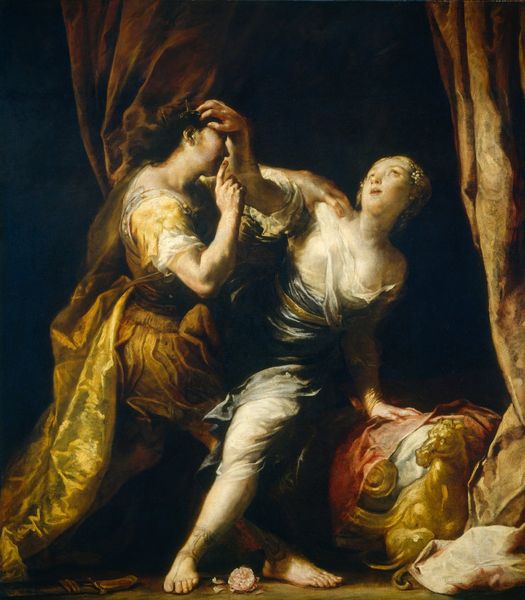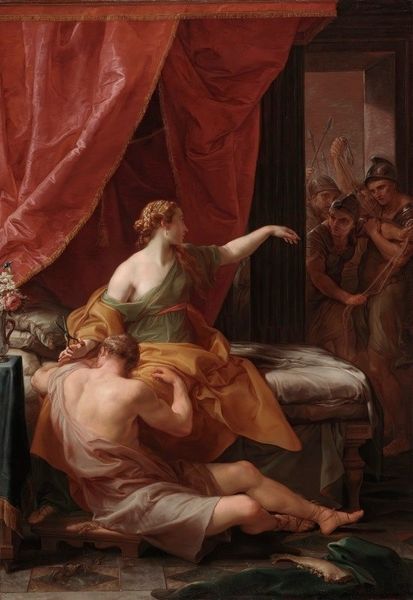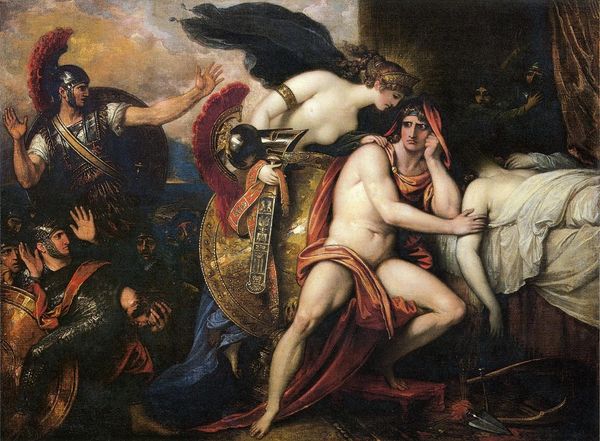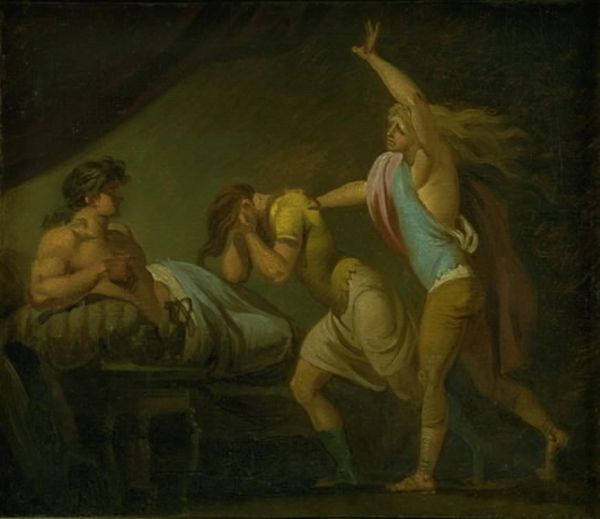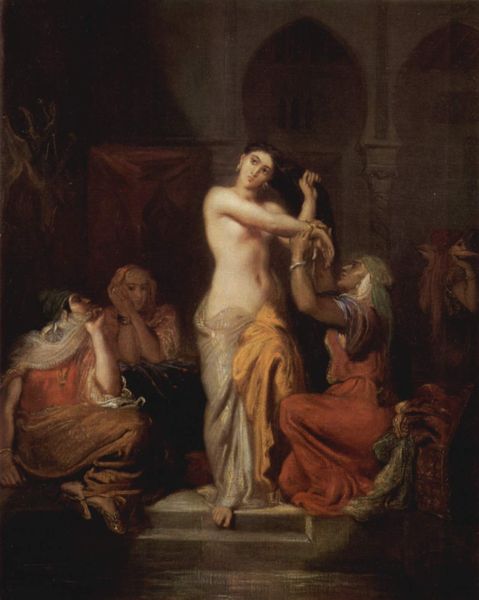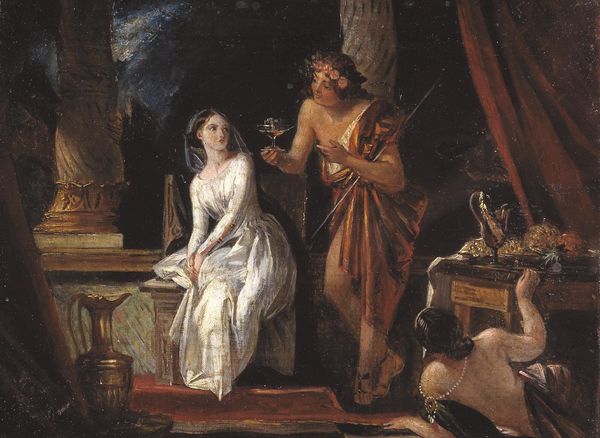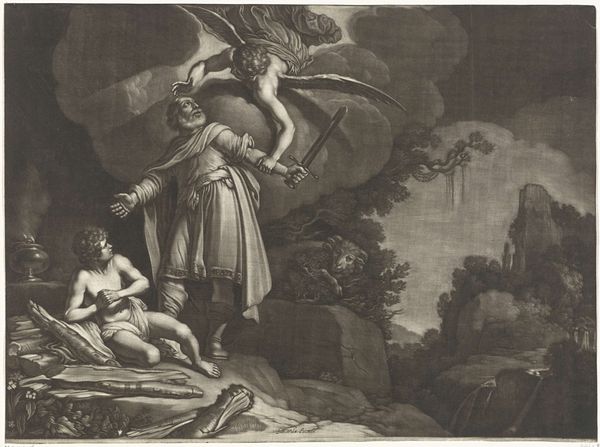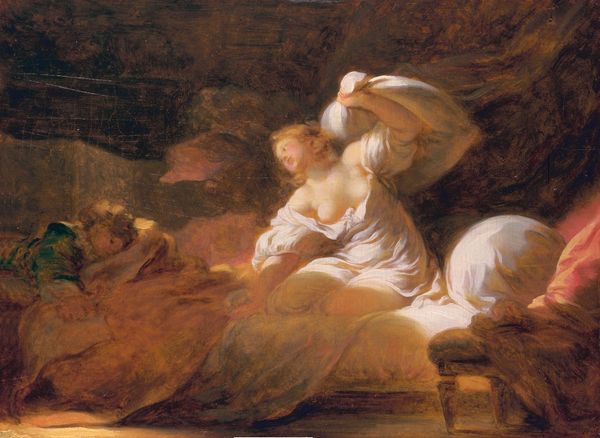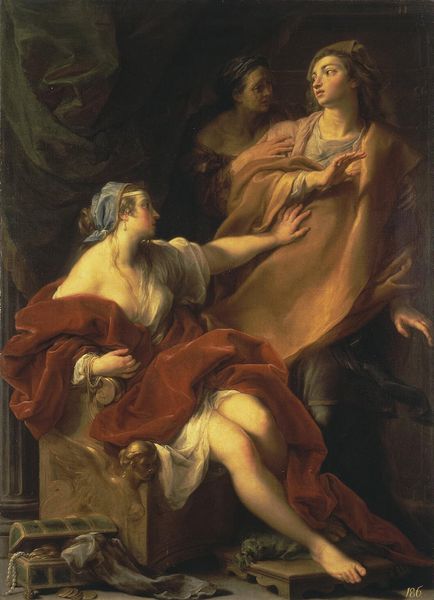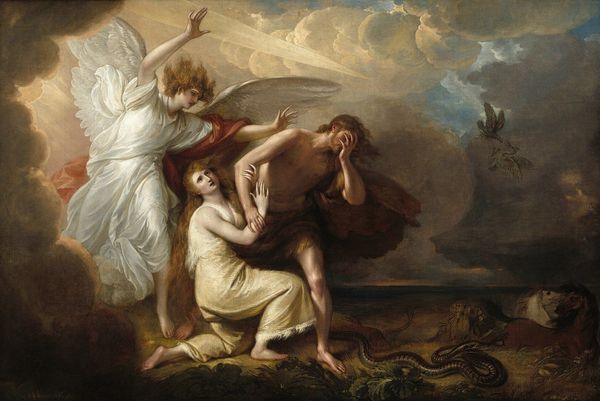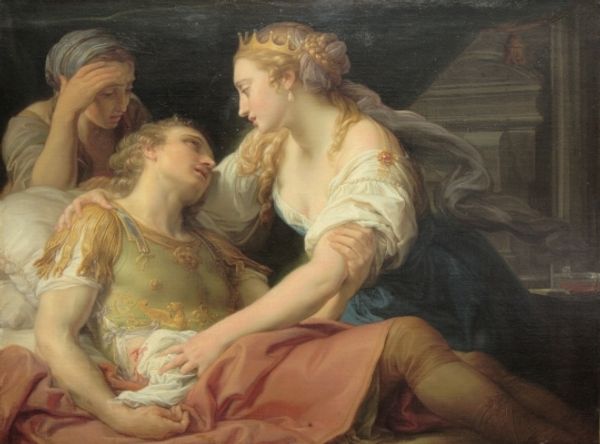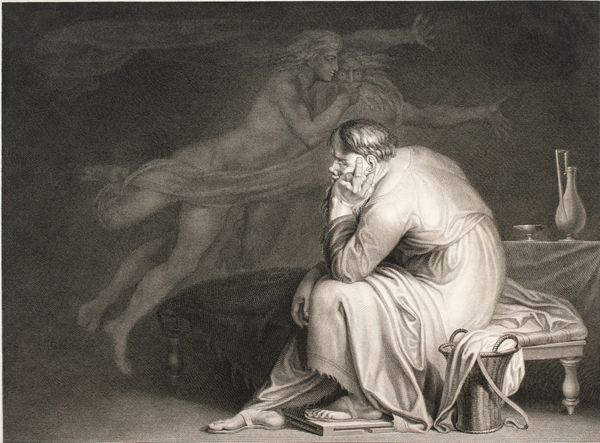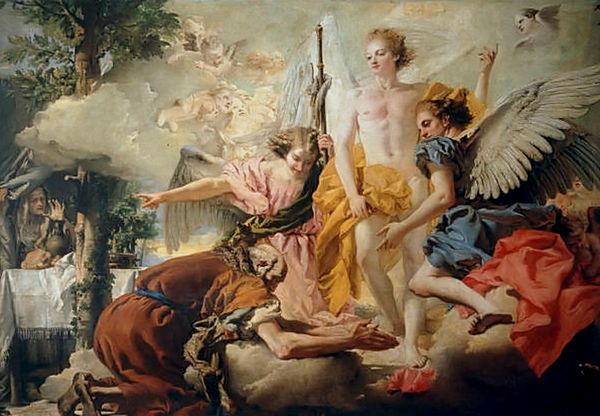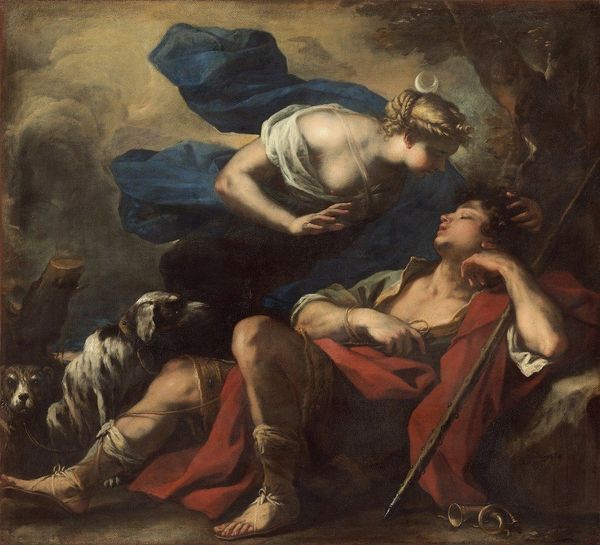
Copyright: Public domain
Curator: It’s hard not to gasp looking at this oil painting from 1783. Henry Fuseli imagines "Percival Delivering Belisane from the Enchantment of Urma." The dark, cavernous space almost swallows the figures. What's your first impression? Editor: Drama. Raw, operatic drama. The heightened emotion in this dimly lit scene gives me chills. There’s a dreamlike quality to it, the ghostly faces especially. It feels like a stage play right before the climax. Curator: Precisely. Fuseli stages these scenes with such theatrical flair. His understanding of Romanticism puts the power of imagination front and center, reflecting its interest in strong emotion, visions, and the supernatural. Editor: So Belisane, chained and desperate, Percival towering over her, sword raised, breaking her enchantment. Even the title is pure storytelling. Who were they trying to reach with these dramatic visualizations of mythology? Curator: Think about Fuseli’s social circles. This painting, inspired by medieval romances, certainly resonated with the period's rising literary trends, feeding a hunger for the mystical and heroic. It reflected and helped shape new aesthetics of heroism and freedom. It touches something primal. Look at the cluster of haunting faces in the upper left, they evoke our anxieties and repressed fears. Editor: Definitely. Those shadowy faces! Almost like inner demons holding her captive. I see in it a powerful image of freedom overcoming internal obstacles—the artist visualized cultural fears and inner states, then projected these archetypes for public consumption. I can't help but wonder how this portrayal of male heroism played for female viewers at the time, though. It makes you consider the painting's politics. Curator: That tension between freedom and control is at the heart of much Romantic art. This painting offers a window into the dreams and anxieties of an era, where reason and the irrational were constantly battling. The narrative invites audiences to confront and contemplate these larger themes. Editor: Seeing Fuseli’s approach through that lens, his artistic intention appears much deeper now. It certainly changes how I interpret those spectral figures!
Comments
No comments
Be the first to comment and join the conversation on the ultimate creative platform.
